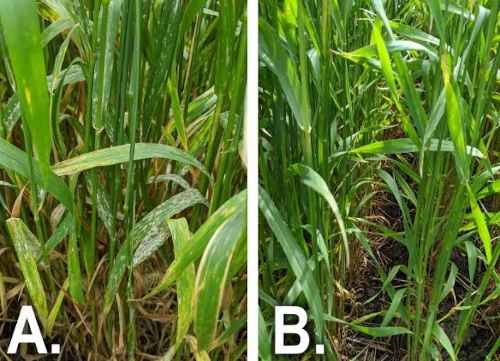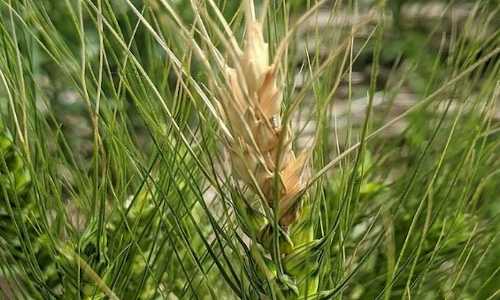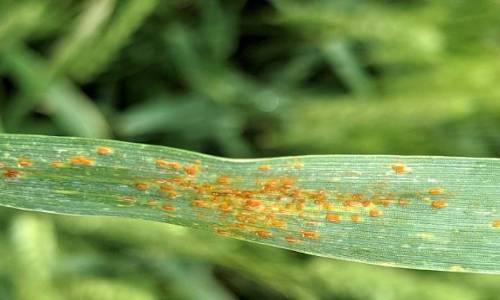By Emmanuel Byamukama
Powdery mildew, fusarium head blight and leaf rust were observed in a few winter wheat fields recently scouted. The recent rainfall showers and warm temperatures have favored these diseases to develop in winter wheat. However, the fact that winter wheat is past flowering and that these diseases are mainly at low severity, impact on yield is expected to minimal.
Powdery Mildew
Powdery mildew develops under humid warm weather and is found in the mid and lower wheat canopies (Figure 1-A). The primary inoculum for powdery mildew pathogen is infested wheat residue from previous season but some inoculum can also be blown by wind from nearby fields.
Some cultivars have good tolerance to powdery mildew (Figure 1-B) and several fungicides on the market are effective at controlling powdery mildew.

Figure 1. Powdery mildew symptoms on a susceptible line (A) compared to a resistant line (B). The two lines are grown side by side in the same field.
Fusarium Head Blight
Fusarium head blight (FHB) is just starting to develop. The FHB pathogen infects the wheat head through the senescing flowers and bleaches the infected spikelets (Figure 2). Sometimes the entire wheat head can be bleached or just a few spikelets.
Although the FHB risk was predicted to be low due to limited rainfall, winter wheat fields that coincided with rainfall at flowering may see moderate levels of FHB if a susceptible variety was planted.

Figure 2. Fusarium head blight (FHB) starting to develop in winter wheat.
Leaf Rust
Leaf rust usually develops after wheat heading mainly due to warmer temperatures around this time of the year.
The rust spores developing inside the leaf burst open the leaf epidermis (Figure 3) leading to moisture loss and eventually reduced photosynthesis rates. Leaf rust pathogen inoculum comes from the southern states and is blown northwards into South Dakota.

Figure 3. Leaf rust symptoms on a winter wheat leaf. Notice the tearing of the epidermis causing by leaf rust pathogen.
Management
Fungal diseases can be effectively managed in-season using fungicides. However, timing of the fungicide is very crucial. The best fungicide timing for managing FHB and fungal leaf diseases that develop after wheat heading is when 50% of the plants are at flowering. Flowering is the last growth stage to apply a fungicide in wheat partly because of limitations on the pre-harvest interval required for fungicides and due to limited yield impact for diseases that develop after flowering. For future seasons, powdery mildew, FHB or leaf rust can be proactively managed by selecting well-adapted, moderately resistant varieties. Crop rotations that include at least 2 years away from the same crop also help reduce disease pressure for pathogens that survive on crop residue such as powdery mildew and FHB.
Source : sdstate.edu